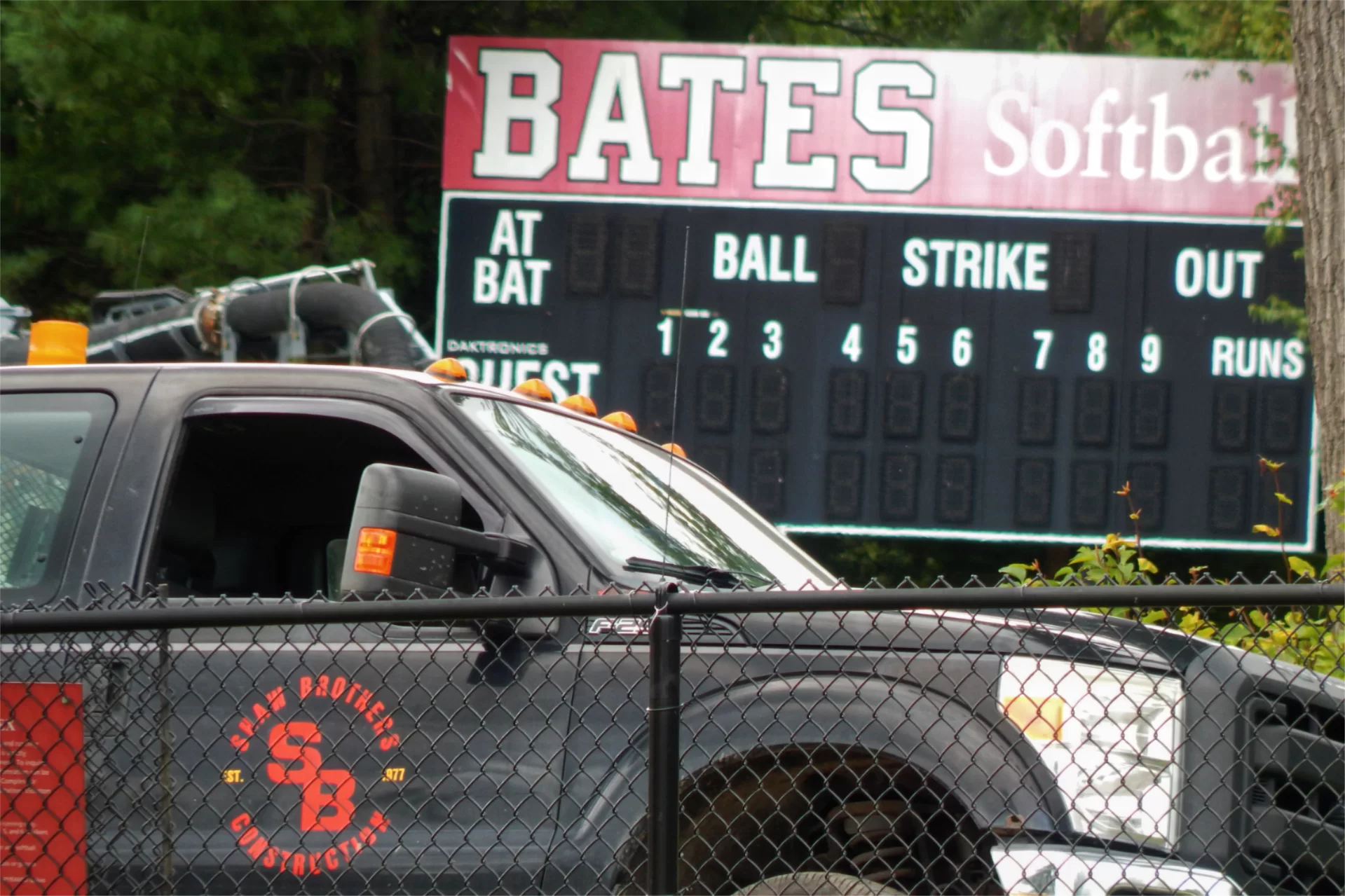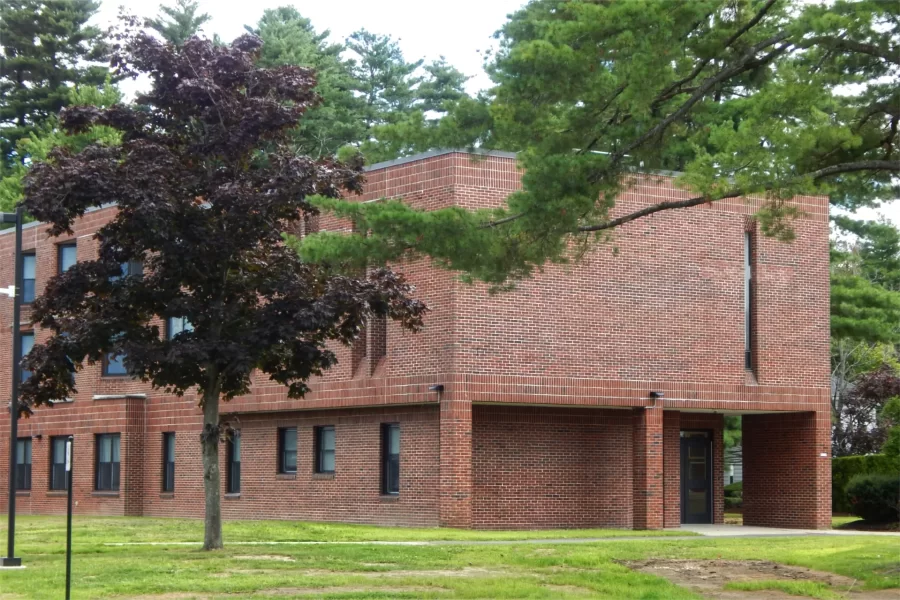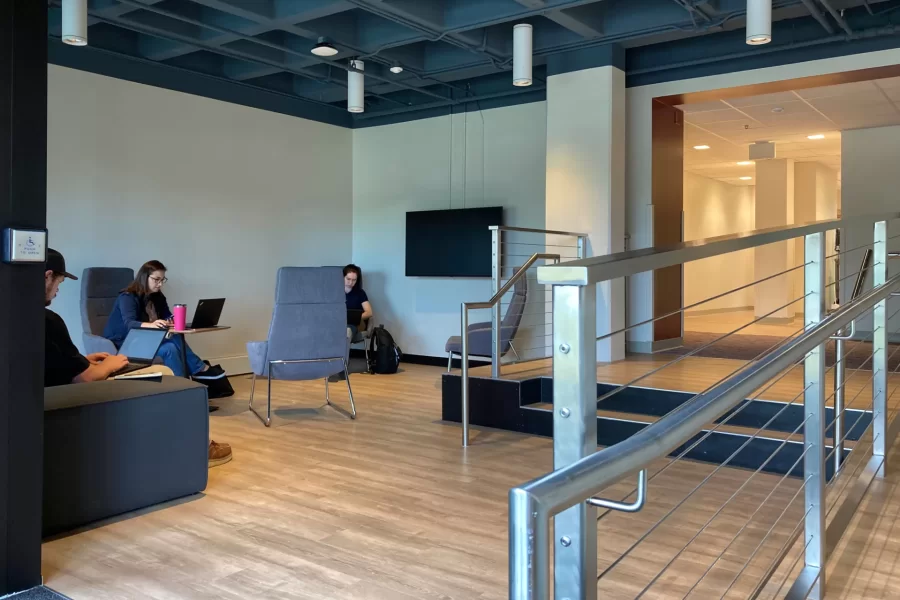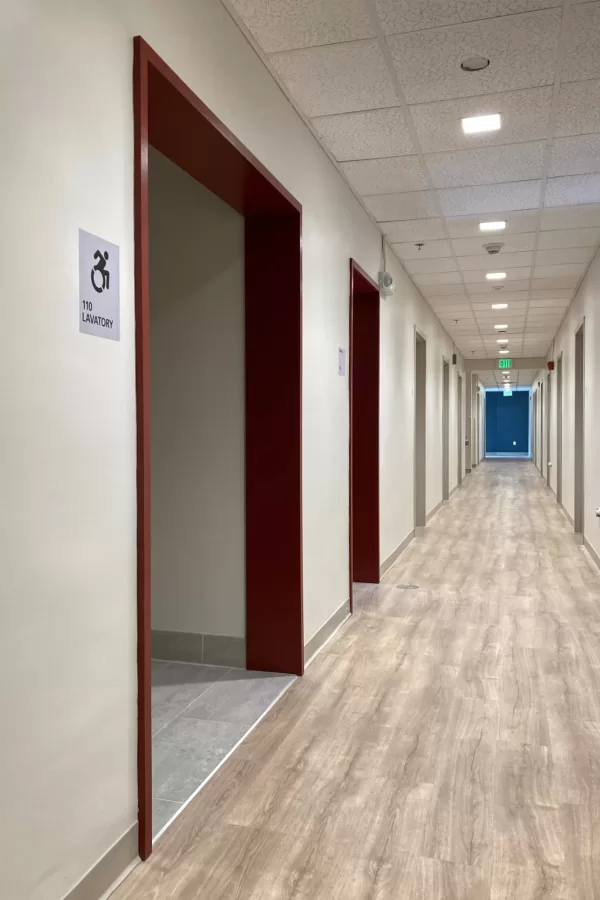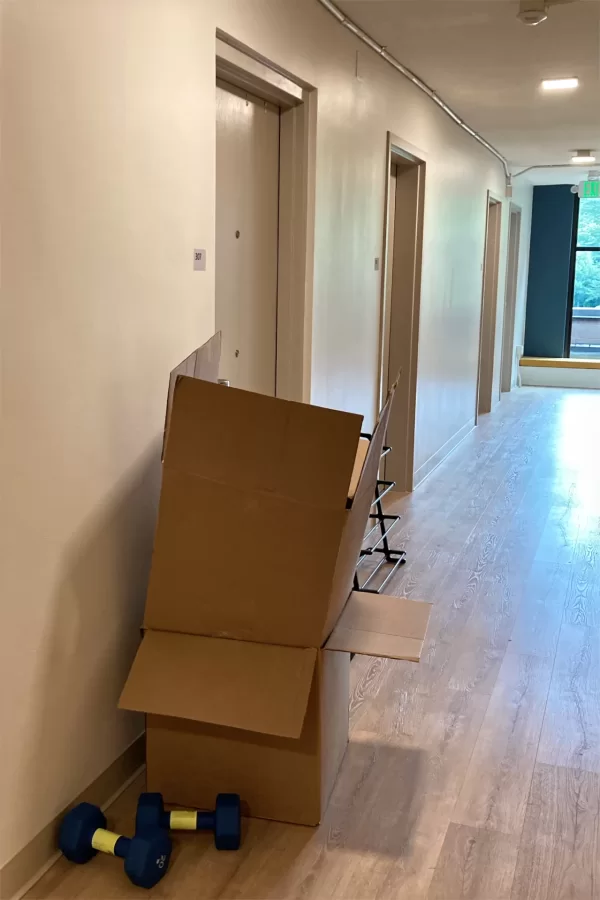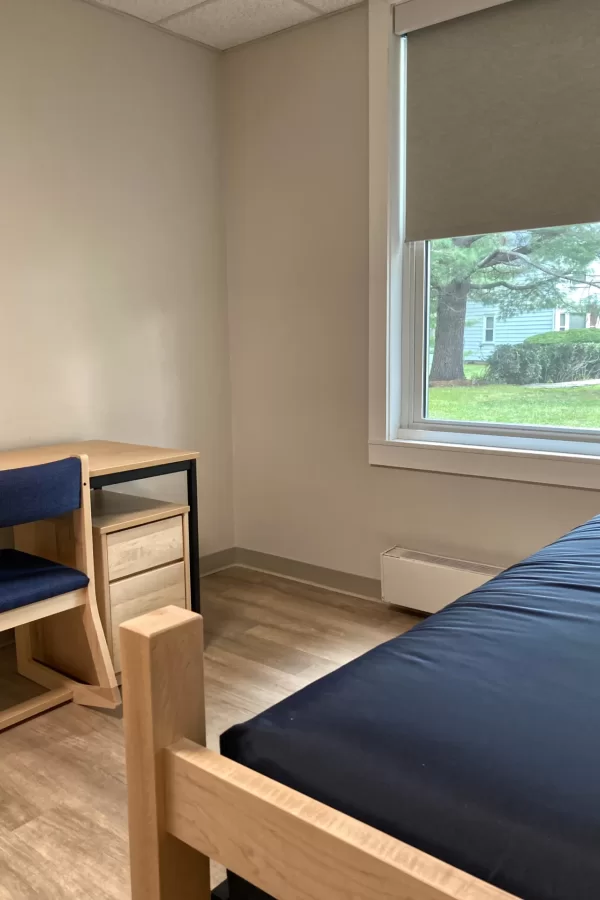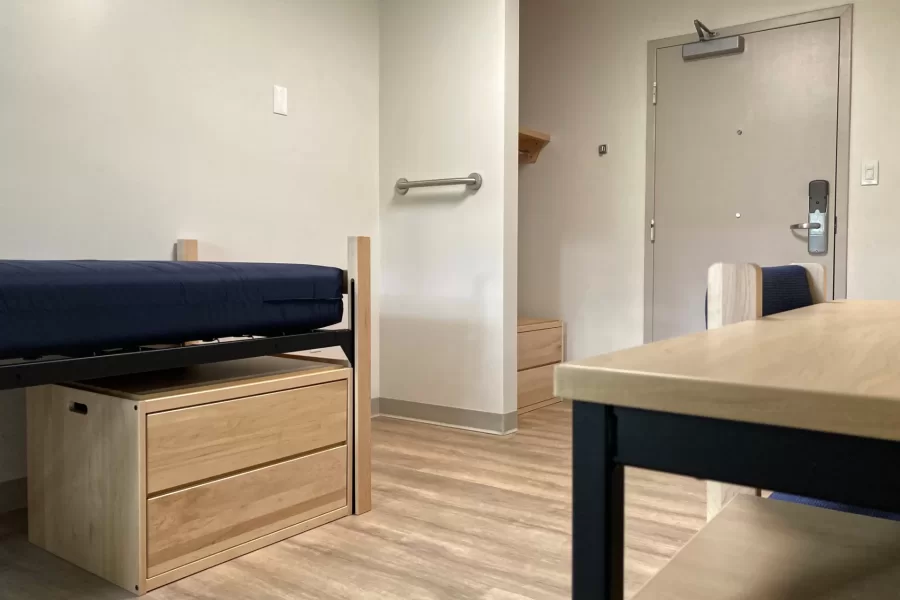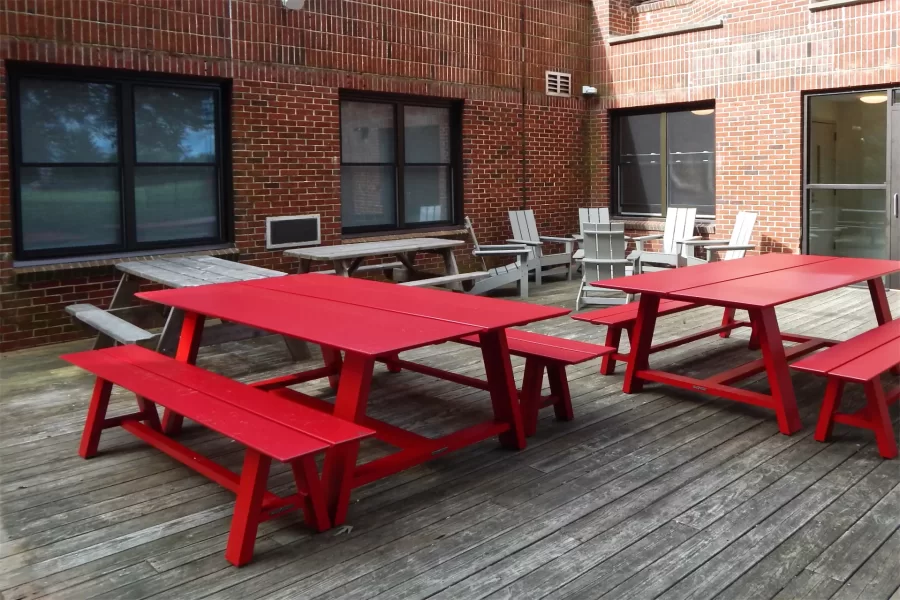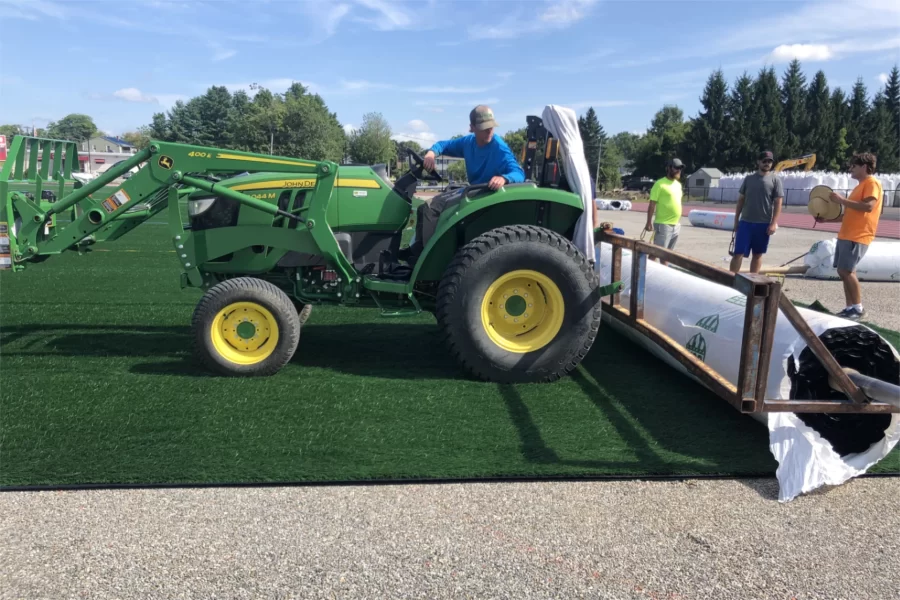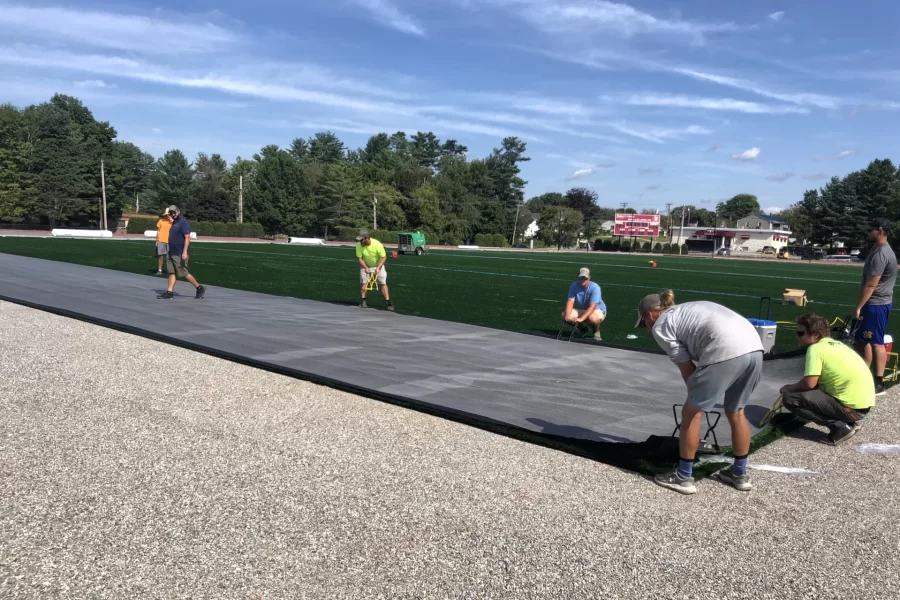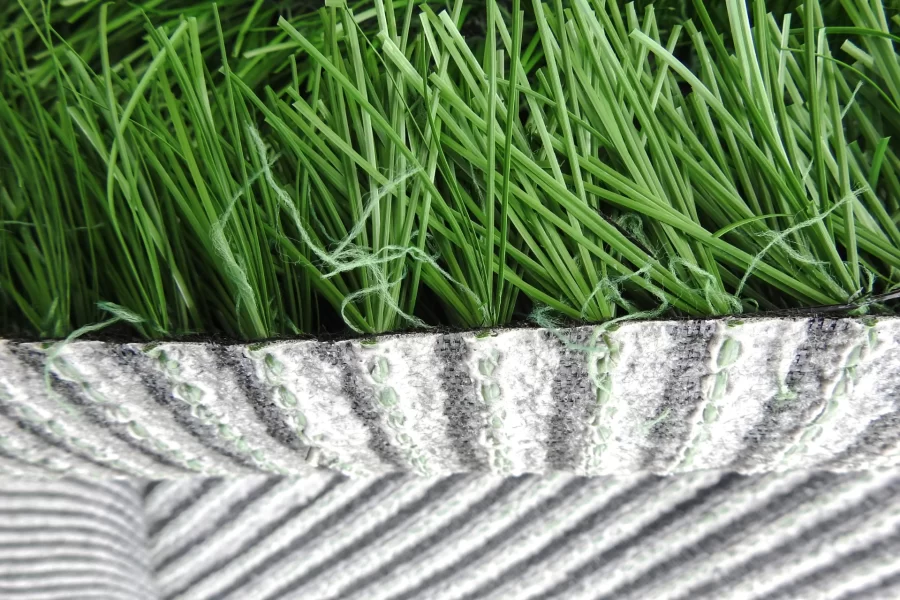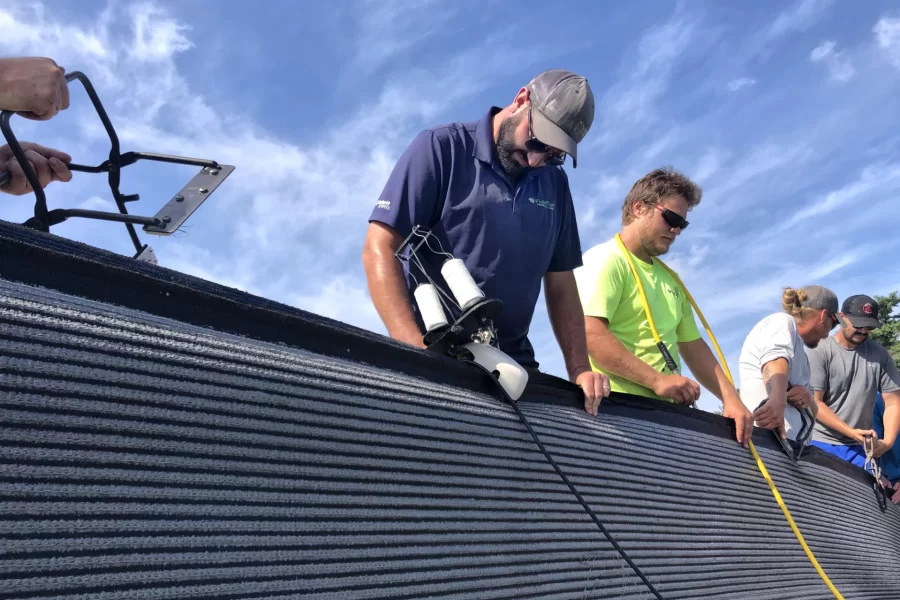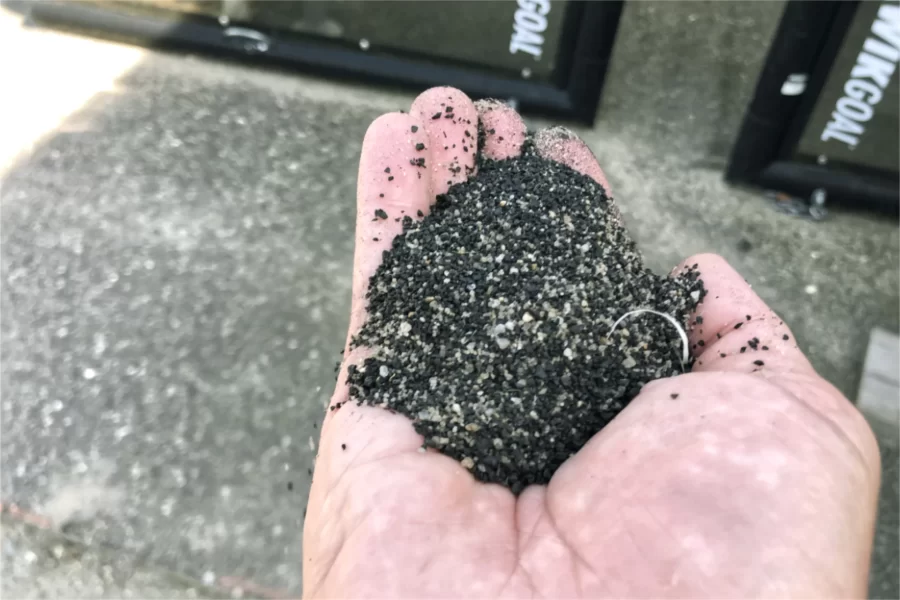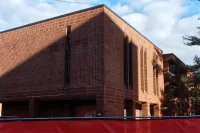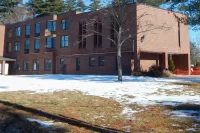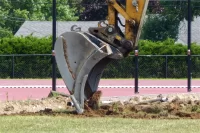
Since Aug. 19, Bates students have been sleeping, socializing, and preparing for the new year in the college’s newest campus residence, now open for business following a renovation that began last December.
With fresh paint, stylish furniture, and a striking new lounge, 96 Campus Avenue has welcomed a handful of early arrivals, including student Residence Life staff, leaders of forthcoming AESOP trips for first-year students, and athletes starting their practices.
With the influx of the full student body this weekend, 57 of the building’s 65 student beds will be filled. (A residence director also moved in last week.)
Following a period of years during which 96 Campus Avenue housed a day care and offices, the renovation has returned the three-story brick building to its residential roots. It was constructed in 1977 to house nuns of the Society of the Sisters of Charity, who worked at the facility nearby that is now known as St. Mary’s Health System.
Bates bought the building in 2021 and decided just 11 months ago to convert it into a dorm.
“I feel good about the project — I mean, it was a great transformation,” Brian Lanoie, the Facility Services project manager in charge of the makeover, told us during an Aug. 21 tour. “It was extremely helpful that it was designed as a dormitory.
“And we had a great team,” in project designers Lavallee | Brensinger Architects and construction management firm Consigli Construction. “We had the typical hiccups that you would expect, but we overcame those, and obviously we’re open on time.
“So overall, for the incredibly short timeframe we had, I’m very happy with the project.”
The city of Lewiston certified the building as fit for occupancy on Aug. 9, and on that same day Consigli returned control of the building to Bates as the two parties agreed that the project was, in the formal term, substantially complete. Still, minor chores remained, Lanoie explained during our tour.
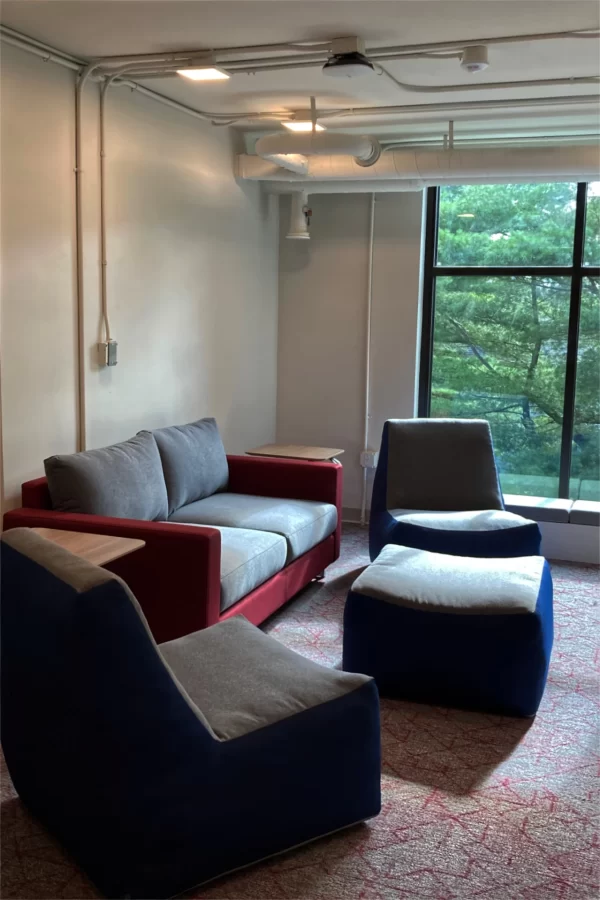
Most could be categorized as punch-list items — minor problems revealed during final inspections. Those included a “little bit of everything,” Lanoie said. For instance, back-ordered items awaiting installation: a unit heater, a few light fixtures, some door hardware.
Plus “a lot of touch-up painting. There’s woodwork that needs to be fixed or replaced in some areas. There’s a broken pane of glass that needs to be repaired. The bike rack isn’t installed yet.”
He continued, “When I looked this morning, there were 75 items still being tracked, and we’re probably going to find some more” encountered by occupants as they settle in.
Another late-in-the-game routine, though, is all but done. So-called commissioning, the process of testing the building’s utilities equipment, can be completed as soon as that back-ordered heater is installed. In fact, the firm providing the new building-management controls, Maine Controls, was scheduled to train Facility Services staff on Aug. 22.
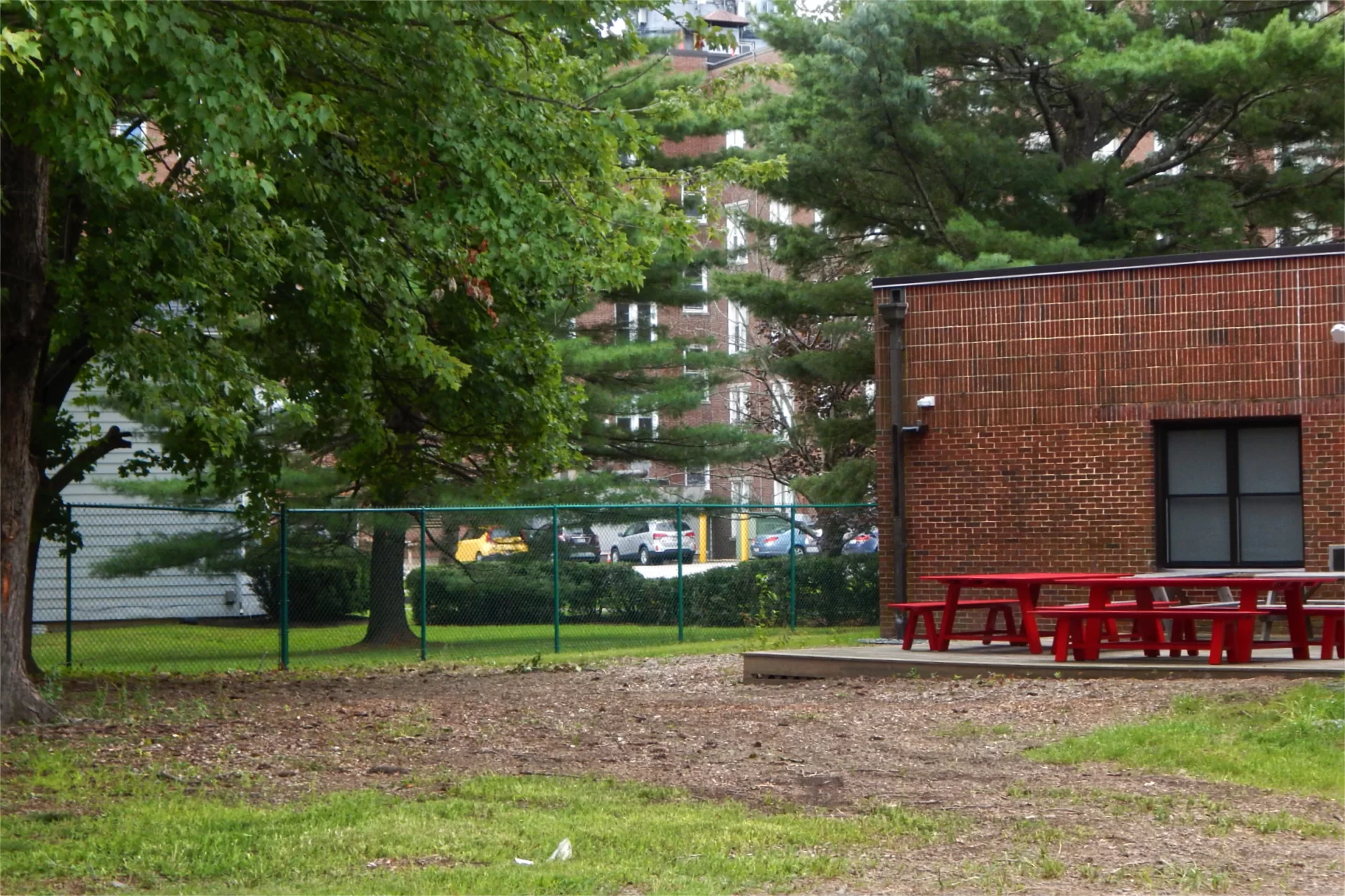
Moving away from punch-lists and commissioning, the 96 Campus Avenue grounds still need touching up. St. Laurent & Son, the local firm responsible for site work on the project, will patch the lawn where construction equipment gouged it around the building. Meanwhile, in a separate project, Gottlieb Landscape Design of Mount Vernon will spiff up the tree-shaded area near the dorm’s outdoor deck.
The conclusion of the 96 Campus Avenue project will also conclude, for now, the presence on campus of Consigli, whose representatives have been at Bates overseeing major construction at least as far back as 2006 — and more or less continuously since 2018 and the start of the Bonney Science Center.
Finally, Lanoie pointed out that he and Chris Streifel, Bates’ director of capital planning and construction (and for years our guide through a number of big projects) have been working on a “Day 2 list” — possible upgrades to 96 Campus Avenue that have emerged in the course of the renovation just ending.
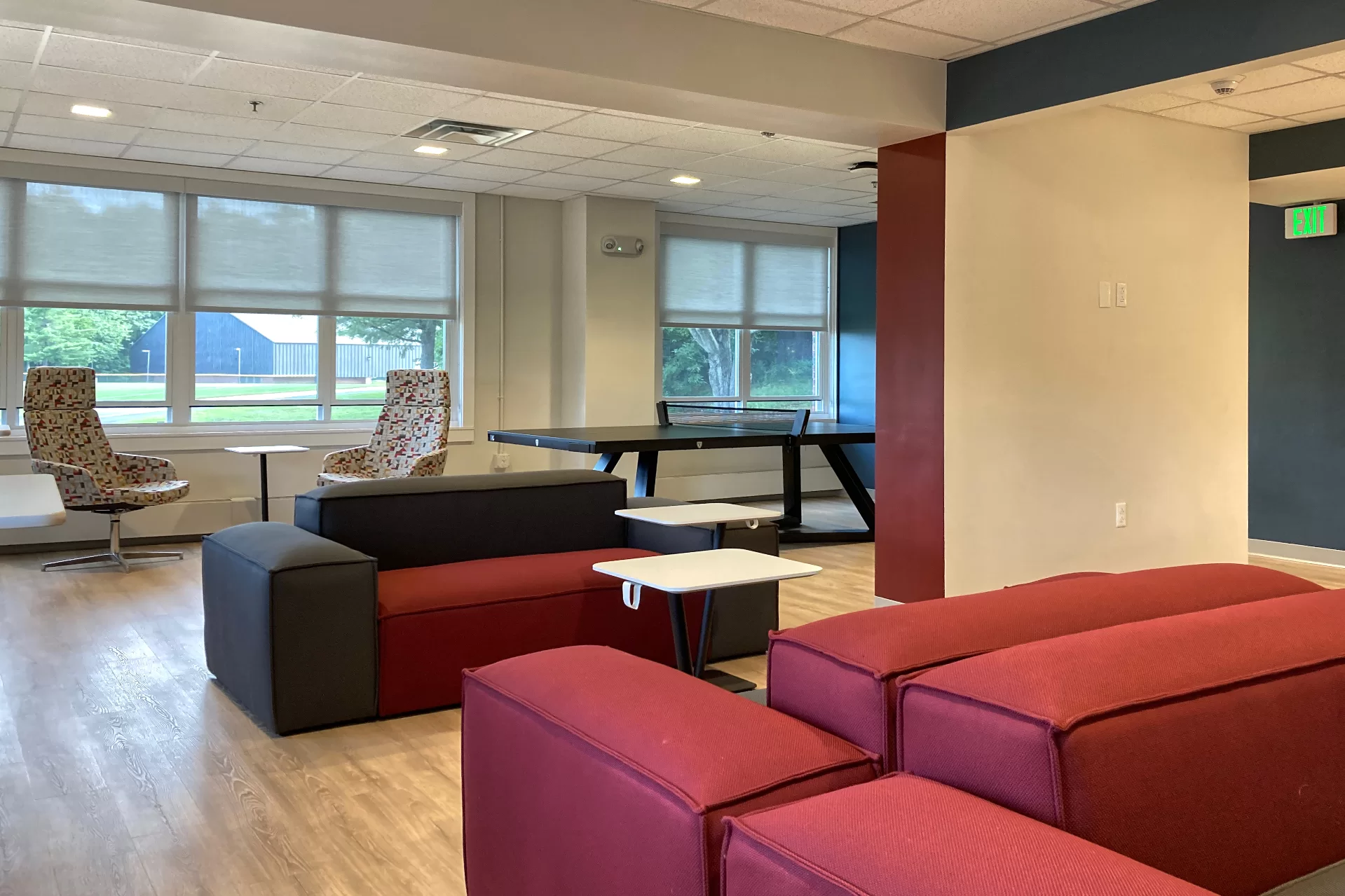
For example, an aging section of roof near the building’s new entrance should be replaced, as should the door to the building’s former main entrance. Putting a single metal door there in place of the current pair of glass doors would send a clear message that the main entrance is elsewhere (in fact, relocated to a former service area in an annex facing the main campus).
“We’ll see if we can afford to do those based on what our contingency (fund) looks like at the end of the job,” Lanoie said. “And then we’ll prioritize that list and we’ll try to focus on them, maybe during a holiday break, and see what we can get done.” (Campus Construction Update’s equivalent list at home is called the “2020 2023 2030 List.”)
They left us with crumbs: By the time you read this (or at least skim it in search of wacky humor), a substantial portion of the Russell Street soccer field will be green. In the first phase of installing a new FieldTurf playing surface, workers for the turf manufacturer began rolling out long strips of the plastic grass-like product early in the week.
As workers used specialized machinery to unspool the turf onto the subgrade, that process was heavy and mechanical. But as other workers adjusted the seams and sewed the strips together, it was also precise and hands-on.
Each strip of turf is 15 feet wide, 183 feet long, and, not surprisingly, heavy — nearly 1,300 pounds. What was surprising is how fast a team of workers, half-a-dozen or so, could fasten the seam between two strips. For that process, the strips were arranged face to face — grassy side to grassy side.
Several members of the team used tong-like grippers to raise the strips, align them, clamp them together for stitching, and set them down again. In the middle of the group, one worker blew debris out of the seam with a jet of compressed air and another, FieldTurf site supervisor Dan Gleason, used a handheld electric sewing machine to stitch the seam.

As he moved along, the strip wranglers on the loose side got out of his way and crossed behind him to handle the stitched area.
By mid-afternoon Tuesday, Farnsworth noted, about three-quarters of the turf was in place. But it will take much longer, probably a couple of weeks, for the next phase of the job: working infill into the turf. That infill, reclaimed from prior turf surfaces elsewhere, comprises a mix of sand and rubber crumbs. After they use up the reclaimed material, “they will finish off the top of the field with new rubber pellets.”
The infill provides shock absorption, structural stability, and, by holding the grass blades upright, an aesthetic benefit.
And the handwork will return later with the quasi-surgical activity of excising bits of turf so that sport-specific lines (such as the penalty area in soccer or goalie crease in lacrosse) and Bates-branding visuals can be stitched into the openings.
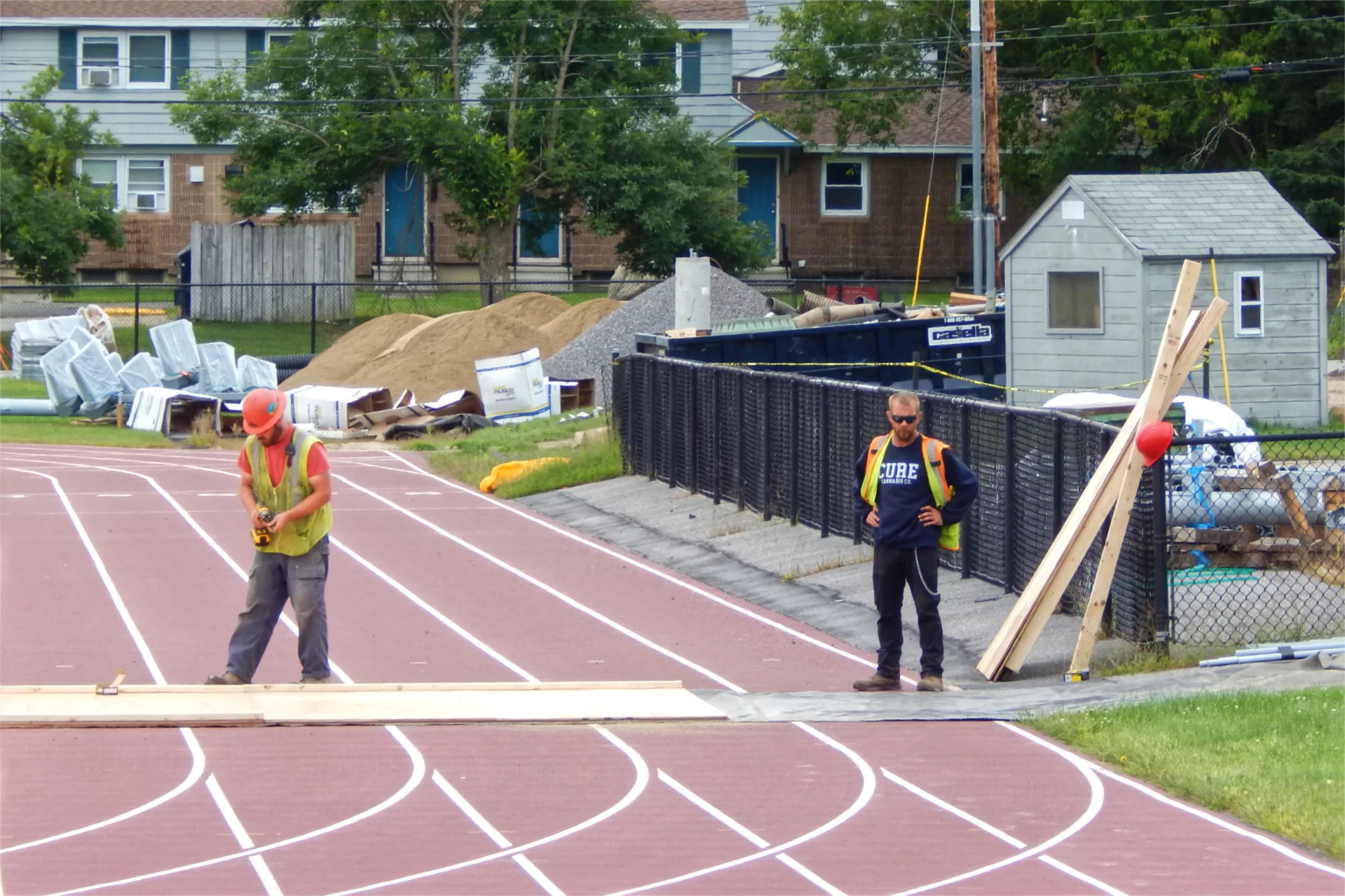
The infill has provided an additional aesthetic treat, too, but it’s temporary. Rubber crumbs started arriving last week, creating a spectacle at the Russell Street parking lot: a reef of fabric bags seeming to stretch from horizon to horizon, all filled with rubber crumbs (putting us in mind of the Three Stooges’ ditty, “She was bred in old Kentucky, but she’s just a crumb up here”).
The crumbs are created by freezing and shattering worn-out (or you might say, retired) tires.
The Russell Street Field revamp also includes new field lights, and the bases for those, made of precast concrete, are in place. A crane will visit the field Sept. 5–6 to erect the poles and place the lamp arrays, which should be fun to watch.
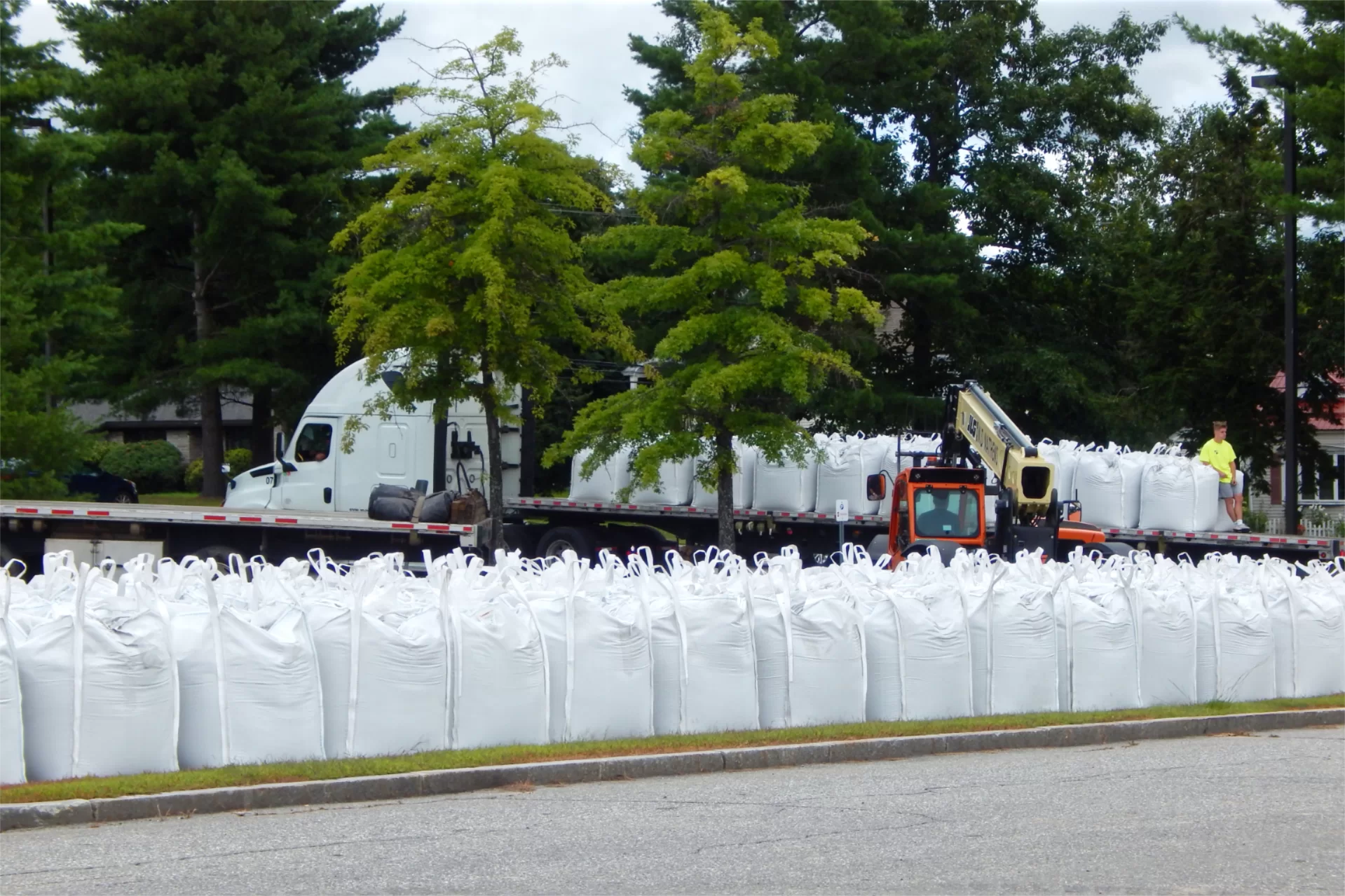
Paul Farnsworth, Bates project manager for the field makeover, explains that the lights are activated for games by a central computer system. That system is a proprietary service provided by the lighting manufacturer, MUSCO, of Oskaloosa, Iowa. (Bates is a longtime MUSCO customer.)
Clients log in and indicate when the lights should shine, and the computer makes it happen wirelessly. The only wired connection is for the raw electricity feeding the lamps. (This makes more sense than what we had pictured: someone running around at game time to switch on each of the four field lights by pulling a very, very long chain.)
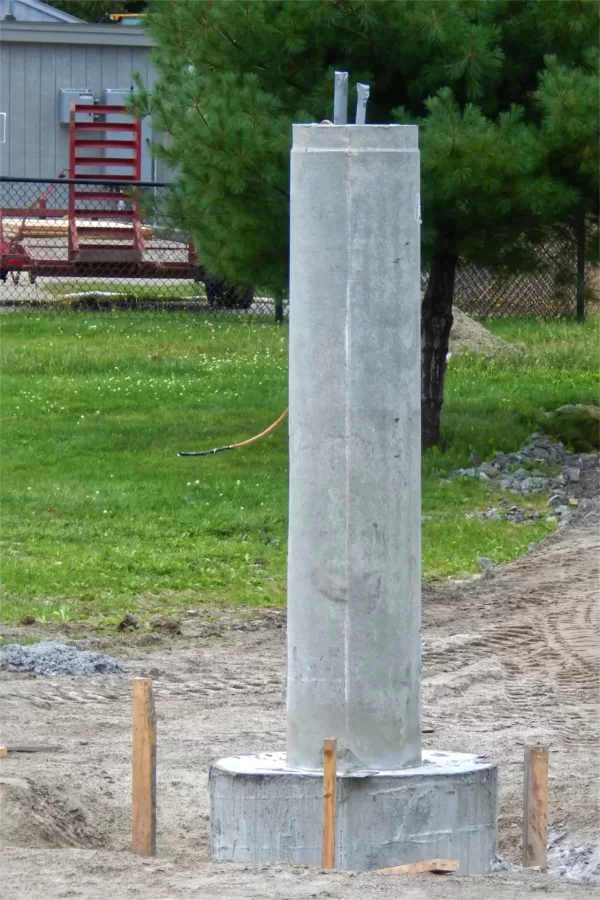
Finally, changes are coming to the Russell Street facilities for softball and for throwing events. New batting cages, one for visiting teams and one for the Bobcats, are being built.
Also under construction are a throwing cage for discus and hammer, and a javelin runway. The latter, Farnsworth explains, is needed because the old one is too close to the soccer field — “we can’t throw javelins into our new turf.” (The old runway will remain, but for use only with rubber-tipped javelins.)
These features are going into a grassy patch between the softball outfield and St. Mary’s Health System property. Bates’ Ultimate teams and other sports have used that area in the past, and they’ll have more options with the new Field Turf.
Can we talk? Send your thoughts about past, present, future, and parallel-universe Bates construction projects to Doug Hubley. Please put “Construction Update” or “Was Shemp ever funny at all?” in the subject line.
Doug Hubley is a writer and musician living in Portland, Maine.
